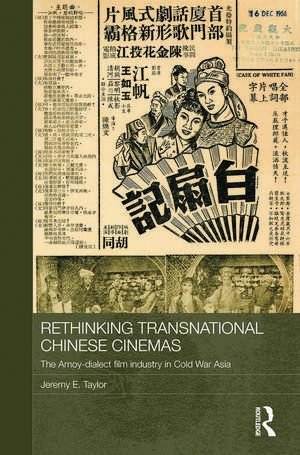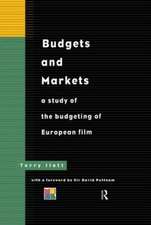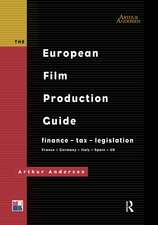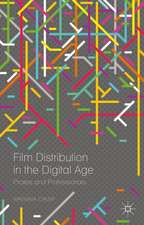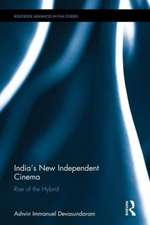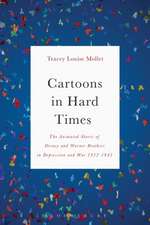Rethinking Transnational Chinese Cinemas: The Amoy-Dialect Film Industry in Cold War Asia: Media, Culture and Social Change in Asia
Autor Jeremy E. Tayloren Limba Engleză Paperback – 29 oct 2013
Rather than examining the industry for its own sake, however, this book focuses on its broader cultural, political and economic significance in the region. It questions many of the assumptions currently made about the ‘recentness’ of transnationalism in Chinese cultural production, particularly when addressing Chinese cinema in the Cold War years, as well as the prominence given to ‘the nation’ and ‘transnationalism’ in studies of Chinese cinemas and of the Chinese Diaspora. By examining a cinema that did not fit many of the scholarly models of ‘transnationalism’, that was not grounded in any particular national tradition of filmmaking and that was largely unconcerned with ‘nation-building’ in post-war Southeast Asia, this book challenges the ways in which the history of Chinese cinemas has been studied in the recent past.
| Toate formatele și edițiile | Preț | Express |
|---|---|---|
| Paperback (1) | 389.38 lei 6-8 săpt. | |
| Taylor & Francis – 29 oct 2013 | 389.38 lei 6-8 săpt. | |
| Hardback (1) | 1054.27 lei 6-8 săpt. | |
| Taylor & Francis – 19 mai 2011 | 1054.27 lei 6-8 săpt. |
Din seria Media, Culture and Social Change in Asia
-
 Preț: 378.83 lei
Preț: 378.83 lei -
 Preț: 329.94 lei
Preț: 329.94 lei -
 Preț: 297.39 lei
Preț: 297.39 lei -
 Preț: 364.22 lei
Preț: 364.22 lei - 18%
 Preț: 1276.52 lei
Preț: 1276.52 lei - 25%
 Preț: 822.91 lei
Preț: 822.91 lei -
 Preț: 367.83 lei
Preț: 367.83 lei - 18%
 Preț: 1272.58 lei
Preț: 1272.58 lei - 18%
 Preț: 1220.31 lei
Preț: 1220.31 lei -
 Preț: 480.39 lei
Preț: 480.39 lei - 18%
 Preț: 1162.84 lei
Preț: 1162.84 lei -
 Preț: 383.63 lei
Preț: 383.63 lei - 18%
 Preț: 1167.71 lei
Preț: 1167.71 lei -
 Preț: 415.24 lei
Preț: 415.24 lei - 18%
 Preț: 703.45 lei
Preț: 703.45 lei - 26%
 Preț: 874.74 lei
Preț: 874.74 lei - 18%
 Preț: 1054.27 lei
Preț: 1054.27 lei -
 Preț: 459.71 lei
Preț: 459.71 lei - 18%
 Preț: 1003.43 lei
Preț: 1003.43 lei - 11%
 Preț: 323.91 lei
Preț: 323.91 lei -
 Preț: 383.63 lei
Preț: 383.63 lei - 15%
 Preț: 426.77 lei
Preț: 426.77 lei - 18%
 Preț: 1059.84 lei
Preț: 1059.84 lei - 18%
 Preț: 1058.43 lei
Preț: 1058.43 lei -
 Preț: 412.19 lei
Preț: 412.19 lei - 18%
 Preț: 1057.75 lei
Preț: 1057.75 lei - 18%
 Preț: 1165.20 lei
Preț: 1165.20 lei - 18%
 Preț: 1219.72 lei
Preț: 1219.72 lei - 18%
 Preț: 1054.75 lei
Preț: 1054.75 lei - 18%
 Preț: 1108.73 lei
Preț: 1108.73 lei -
 Preț: 402.13 lei
Preț: 402.13 lei - 18%
 Preț: 1219.72 lei
Preț: 1219.72 lei -
 Preț: 408.74 lei
Preț: 408.74 lei - 18%
 Preț: 1216.52 lei
Preț: 1216.52 lei - 26%
 Preț: 846.09 lei
Preț: 846.09 lei - 18%
 Preț: 1270.19 lei
Preț: 1270.19 lei - 18%
 Preț: 1219.65 lei
Preț: 1219.65 lei -
 Preț: 409.69 lei
Preț: 409.69 lei - 18%
 Preț: 1166.17 lei
Preț: 1166.17 lei
Preț: 389.38 lei
Nou
Puncte Express: 584
Preț estimativ în valută:
74.51€ • 78.00$ • 61.65£
74.51€ • 78.00$ • 61.65£
Carte tipărită la comandă
Livrare economică 05-19 aprilie
Preluare comenzi: 021 569.72.76
Specificații
ISBN-13: 9780415728324
ISBN-10: 0415728320
Pagini: 192
Ilustrații: 17 black & white halftones
Dimensiuni: 156 x 234 x 10 mm
Greutate: 0.45 kg
Ediția:1
Editura: Taylor & Francis
Colecția Routledge
Seria Media, Culture and Social Change in Asia
Locul publicării:Oxford, United Kingdom
ISBN-10: 0415728320
Pagini: 192
Ilustrații: 17 black & white halftones
Dimensiuni: 156 x 234 x 10 mm
Greutate: 0.45 kg
Ediția:1
Editura: Taylor & Francis
Colecția Routledge
Seria Media, Culture and Social Change in Asia
Locul publicării:Oxford, United Kingdom
Public țintă
PostgraduateCuprins
1. Rethinking Transnationalism 2. Defining Amoy-Dialect Cinema 3. Origins and Development 4. The Shaping of a Cinema 5. The ‘New Amoy-Dialect Films’ 6. A Cold-War Industry 7. The End of Amoy-Dialect Cinema
Notă biografică
Jeremy E. Taylor is a lecturer in Chinese Studies at the School of East Asian Studies, University of Sheffield, UK.
Recenzii
"Jeremy Taylor has written a delightful book about the Hokkien-language cinema industry during the 1950s and early 1960s... Taylor has searched extraordinarily widely to obtain relevant material. In addition to reading extensively in the scholarly literature, he has conducted interviews, obtained much information from a broad variety of newspapers and trade journals, and visited and mined many archives. The very readable text has 17 photographs illustrating many of the book’s themes... For those interested in Overseas Chinese, Taiwan or Chinese cinema, this book is a gem!" - J. Bruce Jacobs, Monash University; The China Journal, No. 67
Descriere
The Amoy-dialect film industry thrived in Hong Kong and Southeast Asia in the 1950s. This book represents the first full length, critical study of the origin, rise and decline of this industry and, in so doing, it raises a number of timely questions relating to transnationalism of Chinese culture, the Chinese Diaspora, and more generally how we study the history of national cinemas.
